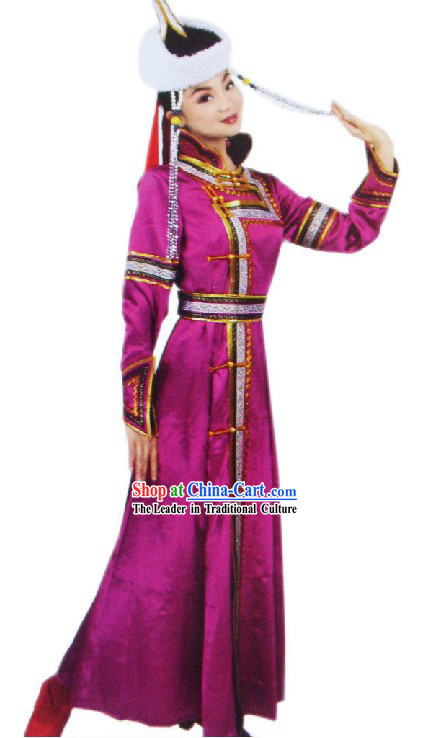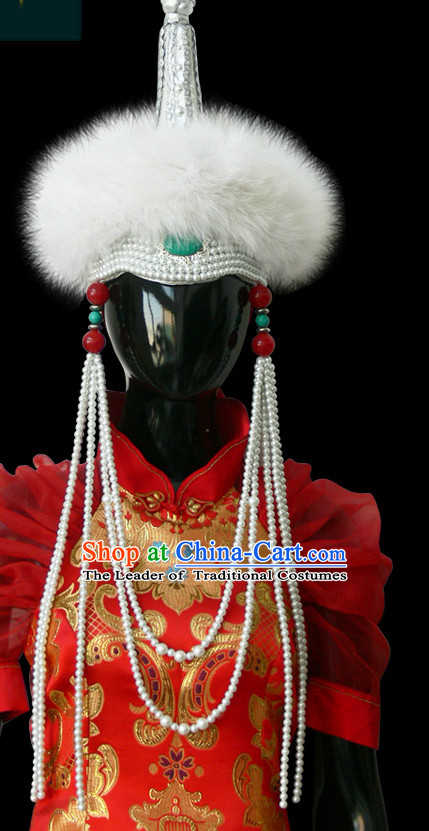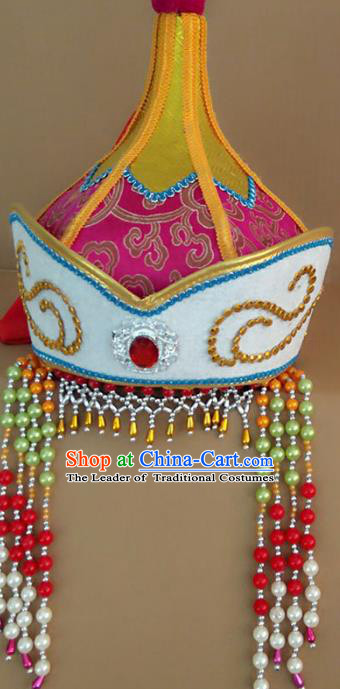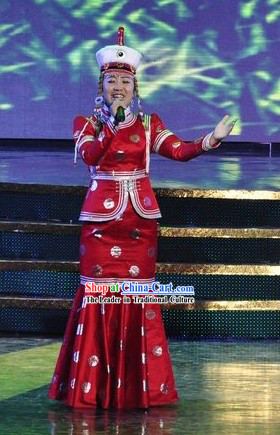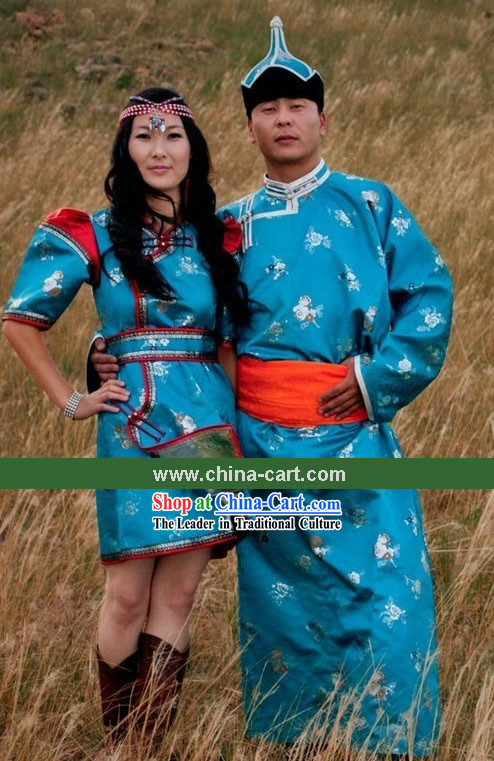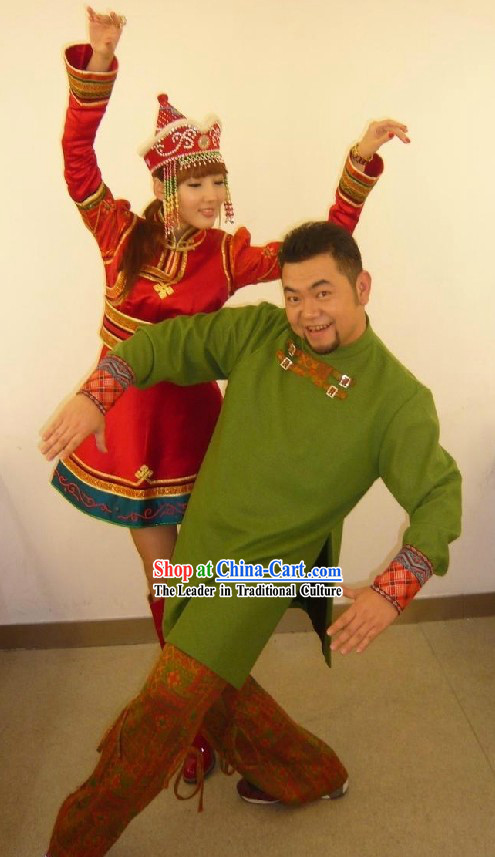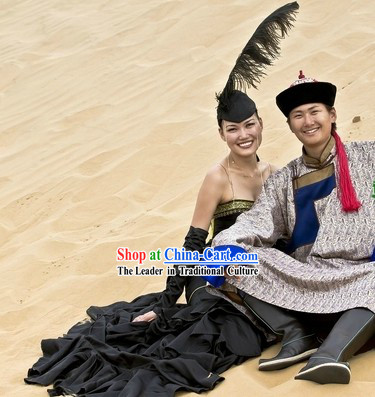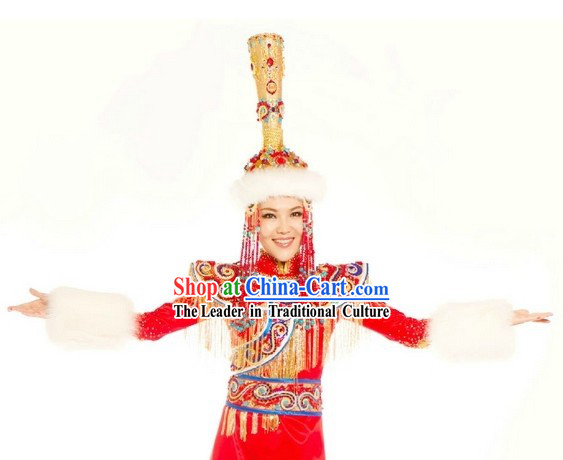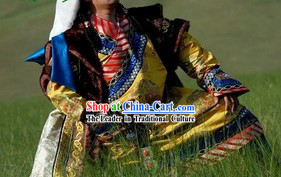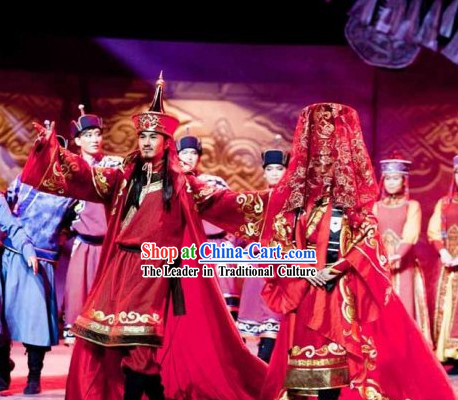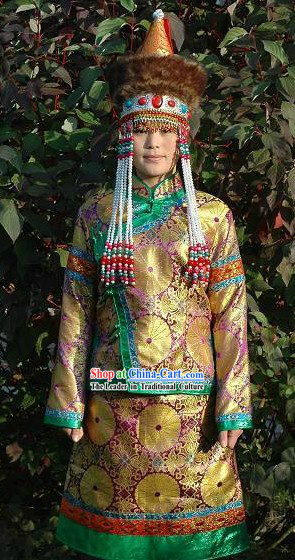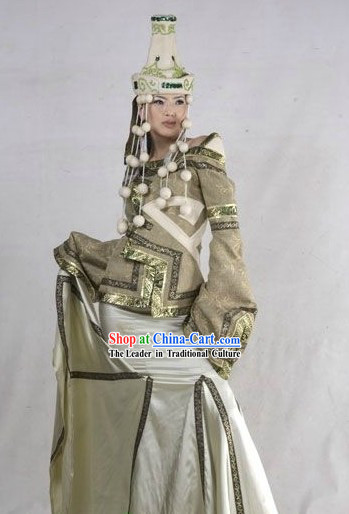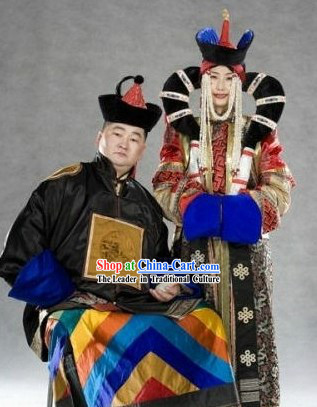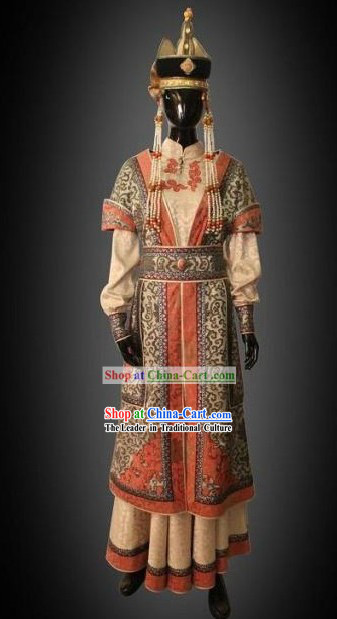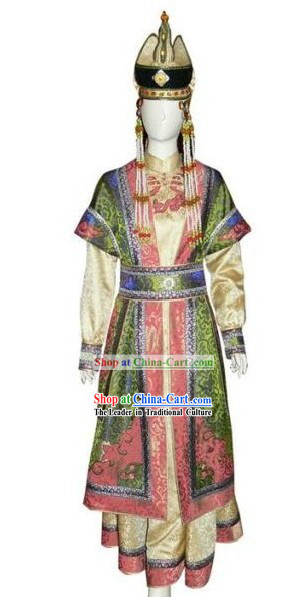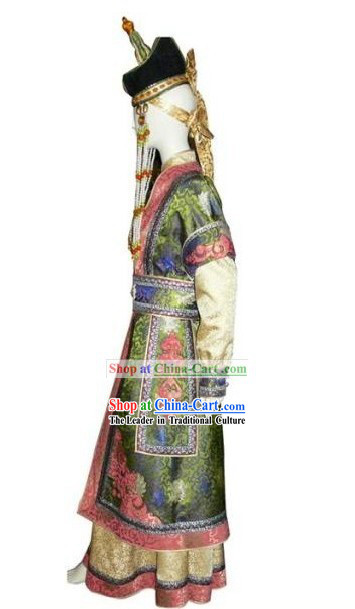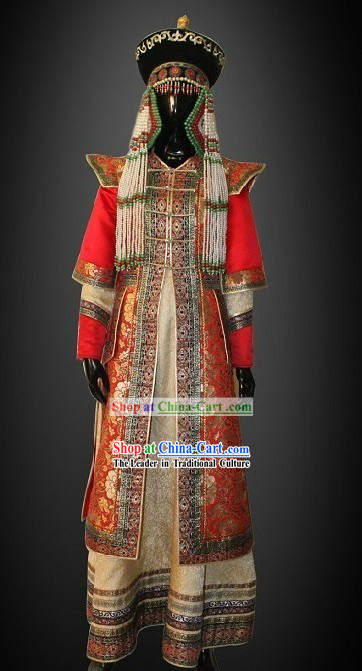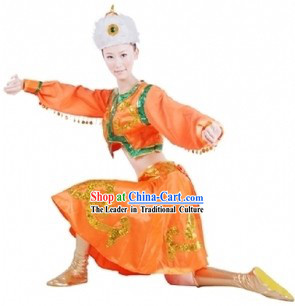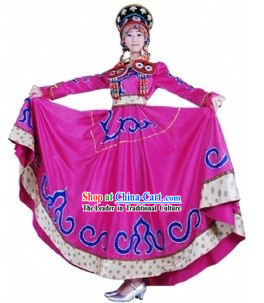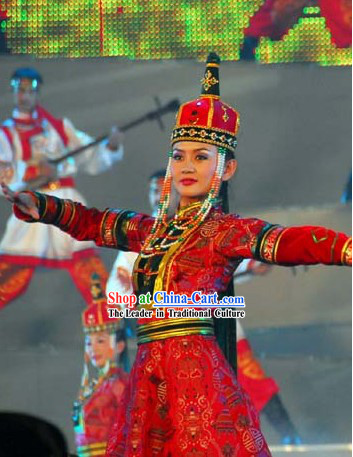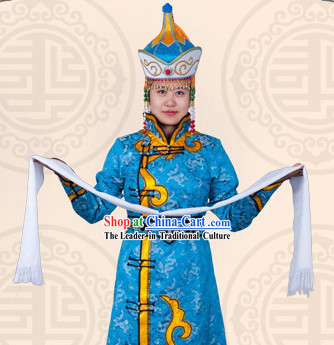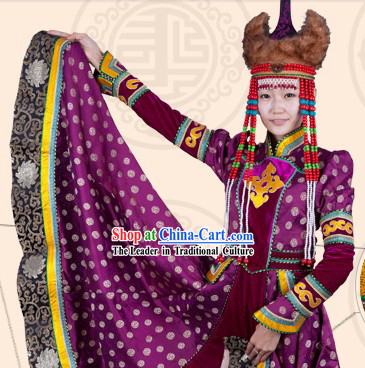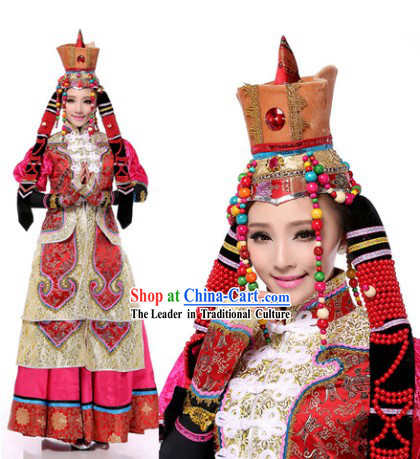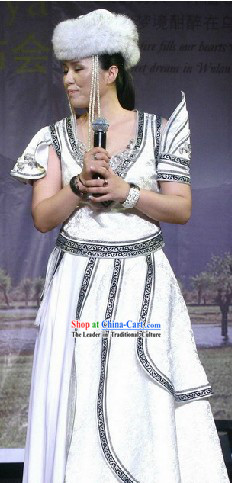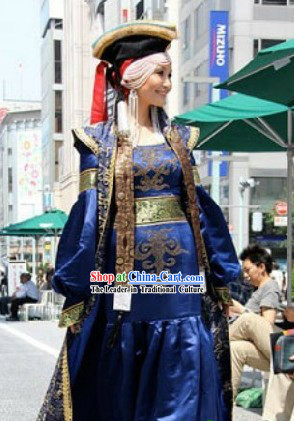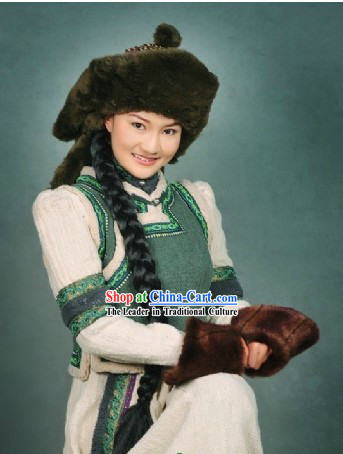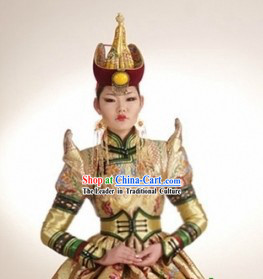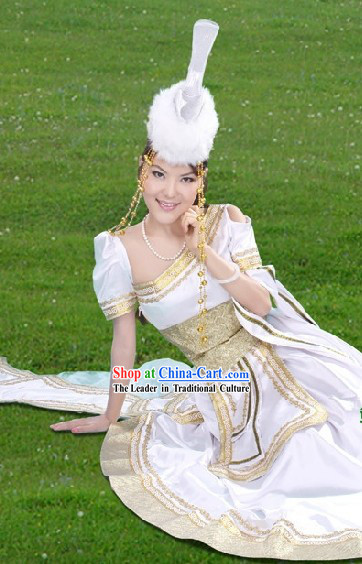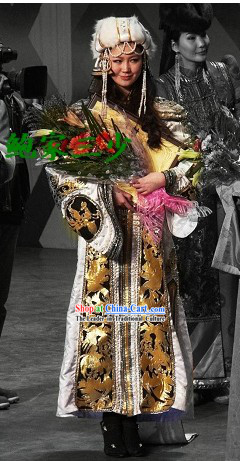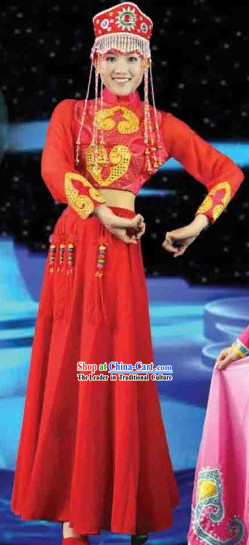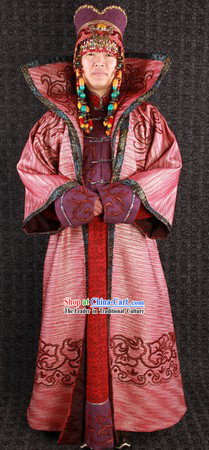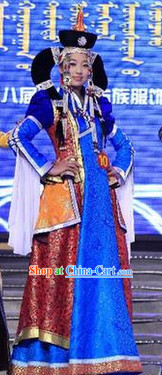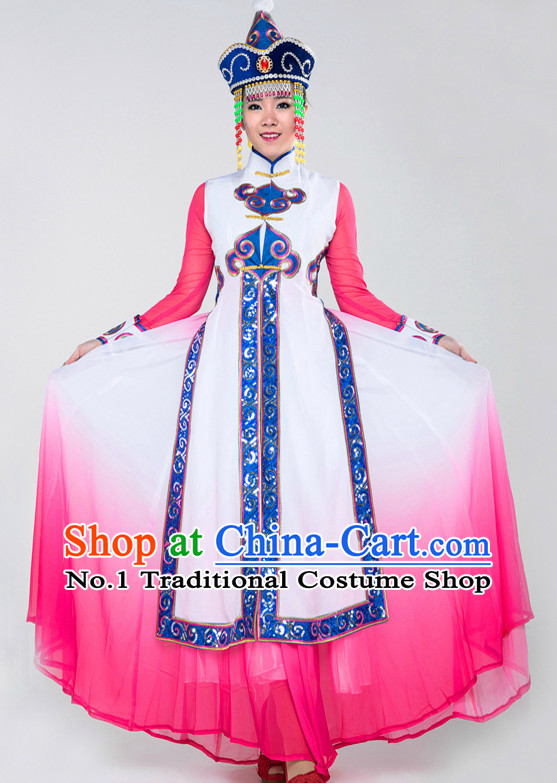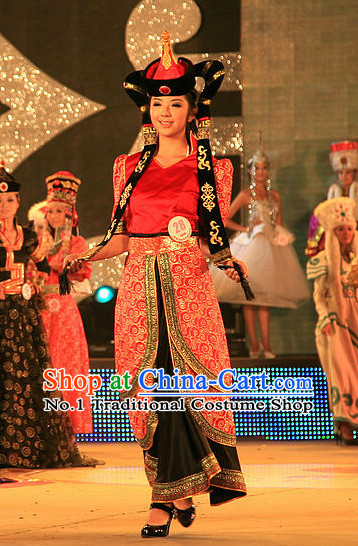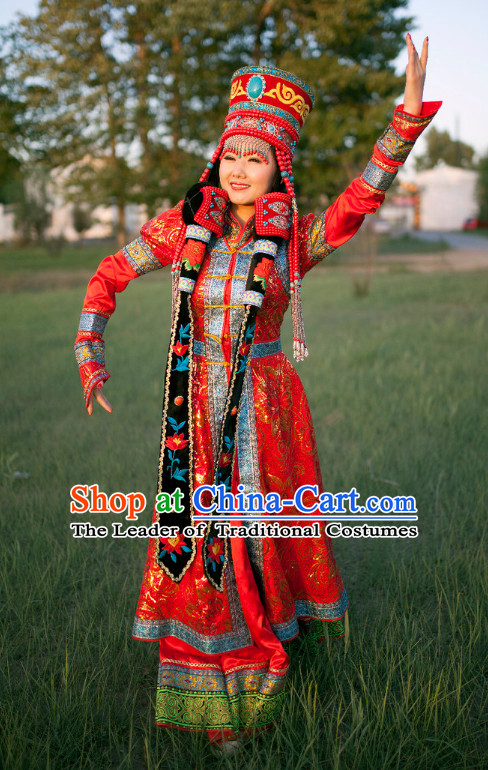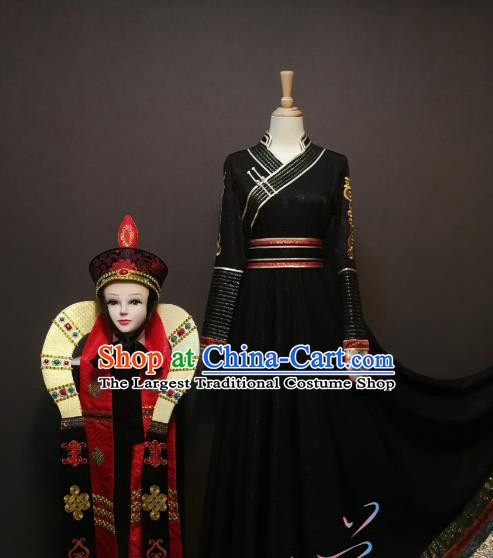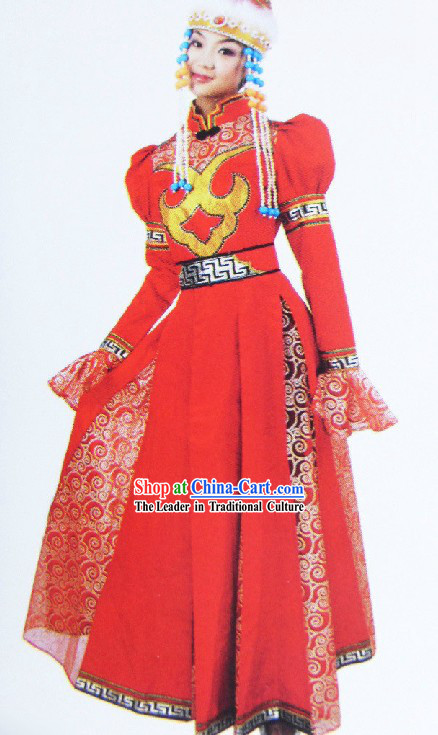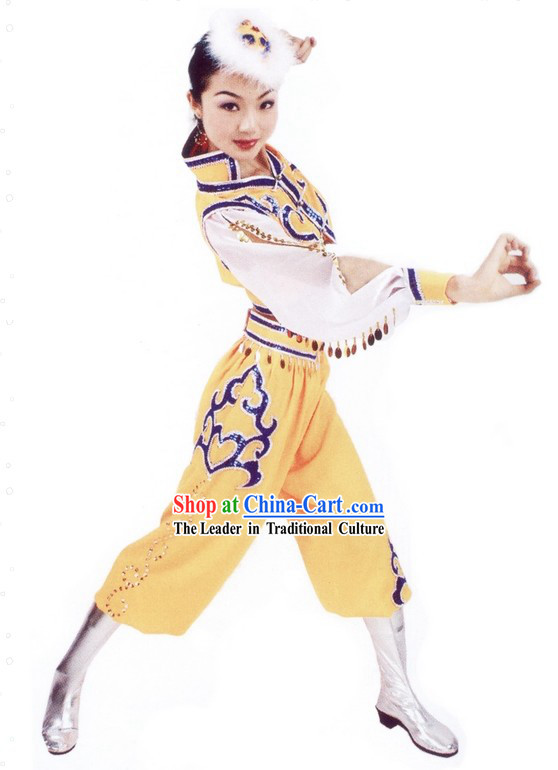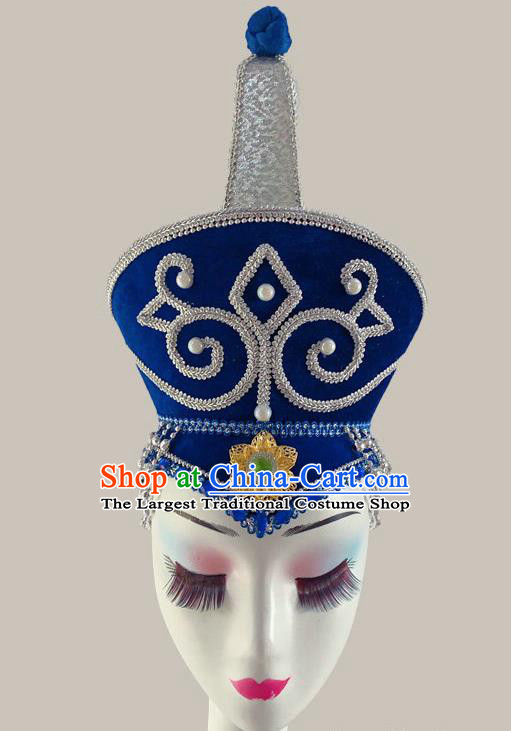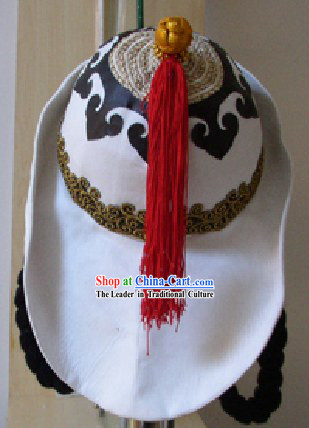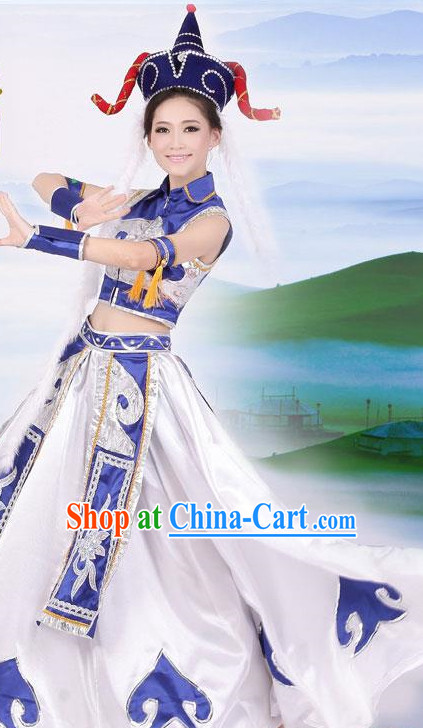
Click Related Pictures for More Audios:
The clothing and hats of the Mongolian ethnic group in China provide women with a unique and elegant style that reflects the rich cultural traditions of the region.
These garments are typically made from silk and feature intricate designs and fine craftsmanship, showcasing a focus on detail and a love for aesthetics.
In Mongolian attire, women often wear a long robe or skirt called a "Kerel," which is a loose, comfortable, and warm top.
The Kerel is usually blue, white, or black, combined with traditional Mongolian patterns such as embroidery, tapestry, and beadwork.
These patterns often symbolize good luck, prosperity, and happiness, reflecting the Mongolian people's yearning for a better life.
In addition to the Kerel, Mongolian women also like to wear a headpiece called a "Hada."
The Hada is a rectangular silk scarf, usually in red with gold threads and beads.
The Hada has significant symbolic meaning in Mongolian culture, representing friendship, respect, and blessings.
On special occasions such as weddings, celebrations, or visits to elders, women will wear the Hada to demonstrate their respect and etiquette.
Mongolian clothing and hats not only have beautiful appearances but also carry profound cultural connotations.
They reflect the Mongolian people's respect for nature, family values, and social values, as well as their pursuit of beauty.
By appreciating and learning about the historical background and design philosophy of these garments, we can better understand and appreciate the unique charm displayed by this multicultural country.
